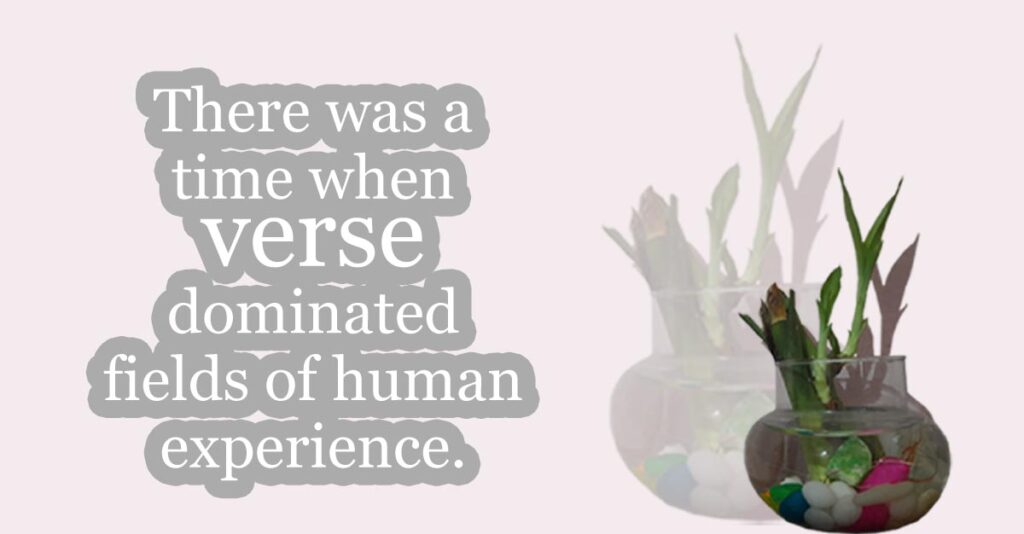Restoration of the Status of Poetry

Epic, ballad and drama are the oldest literary forms and of these three the ballad is the oldest. The ballads were composed orally and in verse by anonymous poets. The ballads had a story line and the stories were usually tragic. Communication was the most important thing for the poet who composed ballads. The author of a ballad was very careful of this aspect of communication to the illiterate or partially literate people. As there is a story line in a ballad, there is action ad there is no self-reference to the narrator. The verse form was older than prose and communication with listeners was central to that narrative art.
There was a time when verse dominated fields of human experience. Elephant care and treatment and care to be taken of a mother after child birth were all written in verse. As a literary form, verse was much older than prose. But in the modern age poetry could not compete with the popularity of the short story and the novel. That was because poetry became more and more an intellectual exercise and difficult, if not obscure, for common reader, when poetry became an intellectual exercise of a select few it began to ignore the aspect of communication with the readers. It became self-referential and it had no story or the semblance of a story to tell. Gradually the people also started losing interest in poetry. A time came when the poets far outnumbered the readers. When the common readers lost interest in poetry, the publishers also became unwilling to publish collections of poems. Young poets often publish their books of poems at their own initiative.
Poets and critics in different quarters of the world have tried to restore poetry to its former status by stressing its communicative aspect but modern poetry is yet to regain the lost status. The contemporary poets should individually and collectively look into the causes.
This volume of Poetry without Fear includes poems of a few poets outside the state along with the Assamese poems. It includes translations of three Mitabhash, a form popularised by Nagen Saikia, a major contemporary Assamese poet. The Mitabhash brings modern Assamese poetry close to the spiritual Indian tradition. A short essay on Nagen Saikia’s Mitabhash is also included in this issue, in which the author has drawn an outline of the unique verse form. In the Assamese essay section, a few new subjects have been included. One such essay is on the life and works of the twelfth century Sufi poet Jalal Al-din Muhammad Rumi. Another discussion is on a few Dalit poets of India. We legitimately hope that this volume will be appreciated by our readers.